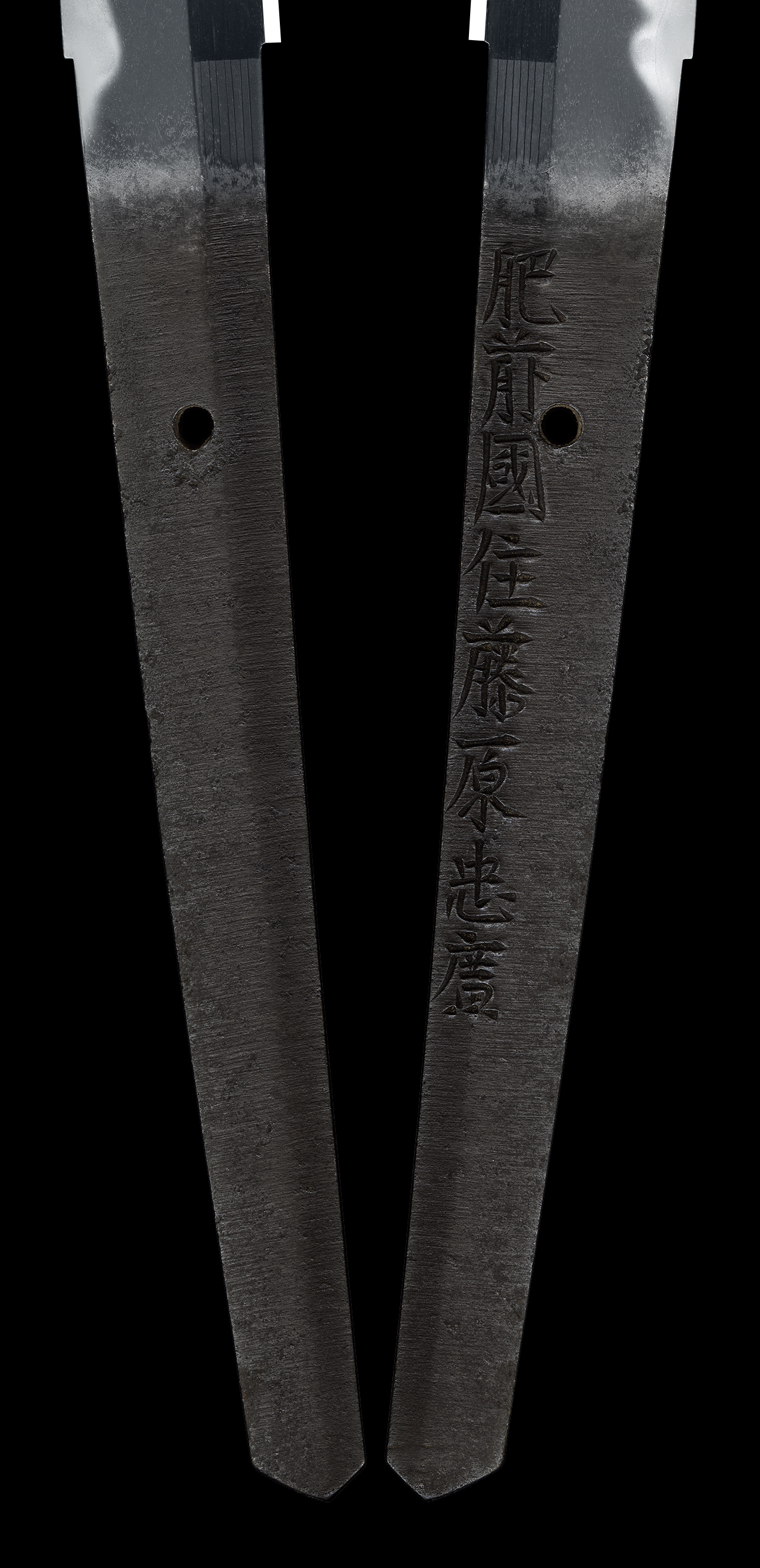Previous answer is
Hizen Kuni Ju Fujiwara Tadahiro
肥前国住藤原忠広
Special feature: This work has beautiful Hizen Jigane with deep Nioikuchi. The blade is
bright and beautiful. Gunomemidare has lots of Ashi. Boshi turns back round and ends
with Hakikake.
==============================================
Appraisal Quiz #762 (September 30th, 2023)
Who made this sword do you think ?
==============================================
Blade Length: 1 shaku, 7 sun, 3 bu, 5 rin (approximately 52.6 cm or 20.71 inches)
Curvature: 6 bu (approximately 1.82 cm or 0.72 inches)
Mekugi-ana (holes for pegs): 3
Motohaba (width at the base): 2.93 cm (approximately 1.15 inches)
Sakihaba (width at the tip): 1.96 cm (approximately 0.77 inches)
Thickness: 0.6 cm (approximately 0.24 inches)
Sword Weight: 465 grams (approximately 16.4 ounces)
The proportions of the sword are wide, with an ordinary width at the tip, and it has a
somewhat ordinary edge. On the back, there is a bo-hi (groove), and on the front, a
simple carving resembling a real sword.
Grain Pattern on the Blade (Jihada): The blade has a fine ko-mokume grain pattern,
well-refined with clear jihada and a distinct pattern.
Temper Pattern (Hamon): The hamon exhibits variations of nie in a midare pattern mixed
with choji midare, and the boshi (temper at the tip) shows variations in the pattern. Sand lines (sunagashi) and fine nie are visible in the hamon, and the activity of gold lines (kin-
sujigai) is apparent. The ashi (feet) are soft and well-defined.
================================================
Answer will be posted at next Appraisal Quiz.
================================================
(Please acknowledge not replying to mail about Appraisal Quiz by our convenience.)


